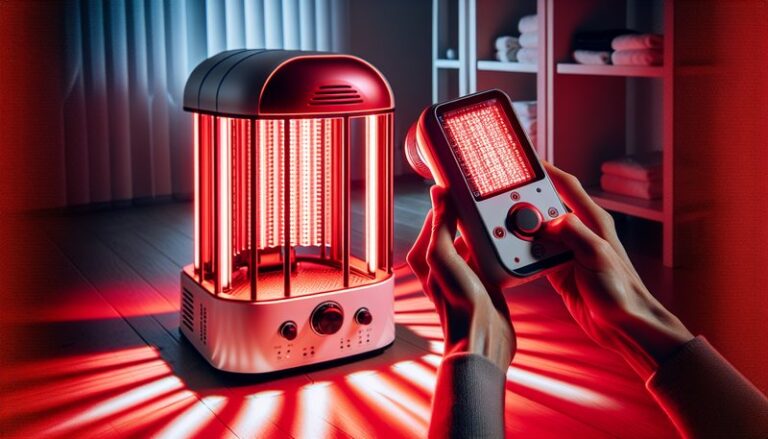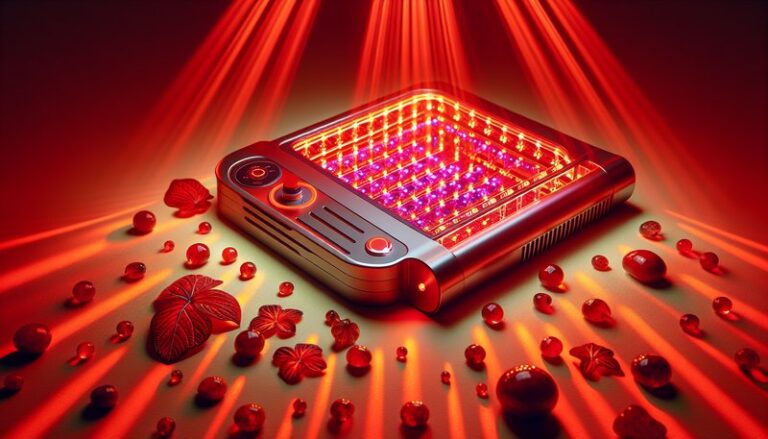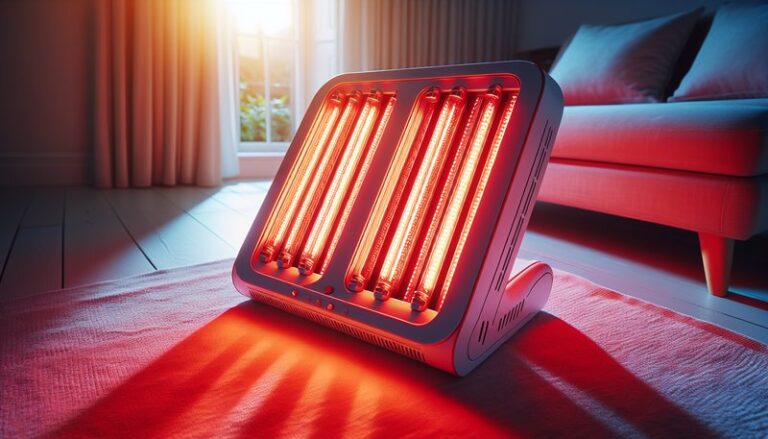What Is The Benefit Of Red Light Therapy?
What Is The Benefit Of Red Light Therapy?
Have you ever wondered how a simple light could have profound effects on your health and well-being?
In recent years, red light therapy has gained popularity as a non-invasive treatment option for various health concerns. This article will explore the science behind red light therapy, its myriad benefits, considerations before usage, and alternative treatments available.
Key Takeaways
- Red light therapy helps promote cell regeneration and healing.
- It can significantly improve skin health and reduce signs of aging.
- The therapy is generally safe, with minimal side effects.
What is Red Light Therapy?
Red light therapy, also known as low-level laser therapy (LLLT) or photobiomodulation, involves using red or near-infrared light to stimulate cellular function. The therapy works by penetrating the skin and stimulating mitochondria, the powerhouse of the cells, to produce more ATP (adenosine triphosphate). This boosts cellular energy and supports various biological processes, including healing, inflammation reduction, and tissue repair.
The concept dates back to the 1960s when scientists discovered that certain wavelengths of light could accelerate healing, particularly in the fields of dermatology and wound care. Since then, research has expanded to explore its applications in pain management, sports injuries, and skin rejuvenation.
What are the Benefits of Red Light Therapy?
Red light therapy boasts a range of advantages, many backed by scientific research. Here are some key benefits.
Enhanced Skin Health
Red light therapy has been shown to stimulate collagen production, which is essential for skin elasticity and firmness. Studies indicate that regular treatment can reduce wrinkles, fine lines, and other signs of aging, providing a youthful appearance.
Accelerated Healing
Whether it’s a sports injury or a chronic condition, red light therapy can speed up the healing process. Clinical studies have demonstrated its efficacy in promoting tissue repair, reducing inflammation, and alleviating pain associated with various injuries.
Improved Mood and Well-Being
Emerging research suggests that red light therapy may positively impact mental health. The exposure to light can enhance mood, alleviate symptoms of depression, and even improve sleep quality by regulating circadian rhythms.
Pain Management
For individuals dealing with chronic pain conditions, such as arthritis or fibromyalgia, red light therapy has shown promise in reducing pain and inflammation. Its non-invasive nature makes it an appealing option for those looking for alternatives to medication.
Muscle Recovery and Performance
Athletes and fitness enthusiasts can benefit significantly from red light therapy. Studies suggest that it can enhance muscle recovery after exercise, reduce soreness, and improve overall performance by increasing blood circulation and reducing oxidative stress.
Is it Possible to Use Red Light Therapy at Home?
Absolutely! With advancements in technology, many devices for home use are now available, allowing individuals to incorporate red light therapy into their daily routines conveniently.
What are the Advantages of At-Home Use?
Home devices provide several benefits for users:
Read the full story Does Red Light Therapy Emit Radiation?
- Convenience: Performing treatments at home saves time and allows for flexibility in usage.
- Cost-effective: Investing in a home device can be more economical than frequent visits to a clinic.
- Privacy: Home treatments offer a private and comfortable setting for personal care.
What are the Disadvantages of At-Home Use?
While at-home therapy has its perks, there are also challenges to consider:
- Effectiveness: Some high-quality results are achievable in clinical settings with professional equipment that may not be matched by consumer-grade devices.
- Consistency: Users may struggle with maintaining a consistent routine compared to scheduled appointments in clinics.
- Safety and Knowledge: Proper usage is crucial. Lack of understanding about the right settings and duration can diminish effectiveness or lead to skin irritation.
What are the Things to Consider Before Starting Red Light Therapy?
As with any treatment, it’s important to take several factors into account before beginning red light therapy.
Consultation with Healthcare Provider
Before starting red light therapy, particularly for medical conditions, a consultation with a healthcare provider is advisable. They can provide guidance and ensure that this therapy aligns with your overall health plan.
Choosing the Right Device
There are numerous devices available, from portable handheld units to larger panels. Researching the specifications, such as wavelength, intensity, and safety certifications, will help in finding the most suitable option.
Understanding Treatment Protocols
Knowing how often and for how long to use red light therapy is critical for maximizing benefits. Following manufacturer guidelines and scientific recommendations will ensure optimal results.
Consideration of Skin Sensitivity
Individuals with specific skin types or conditions should consider how their skin might react to light exposure. Testing a small area before engaging in full treatments is often recommended.
What are the Alternatives to Red Light Therapy?
If red light therapy doesn’t suit your needs, there are several alternative treatments worth exploring.
Cryotherapy
Cryotherapy involves exposing the body to extreme cold temperatures to reduce inflammation and promote recovery. It can also enhance mood and improve skin texture, much like red light therapy.
See our comprehensive review “Do Athletes Use Red Light?”
Microdermabrasion
This non-invasive procedure exfoliates the skin’s surface to reveal a brighter complexion, promote collagen production, and reduce wrinkles. It’s particularly popular for improving skin appearance.
Chemical Peels
Utilizing chemical solutions, these peels promote skin regeneration, address pigmentation issues, and enhance overall skin texture. While they may not provide the same depth of healing as red light therapy, they can effectively rejuvenate skin.
LED Light Therapy
Similar to red light therapy, but often involves multiple wavelengths, LED light therapy can target specific concerns, like acne, pigmentation, or aging signs. Different colors of light are used for varied effects.
Conclusion: Is it Recommended to Use Red Light Therapy?
In conclusion, red light therapy offers a multitude of benefits ranging from enhanced skin health to effective pain management. While at-home devices are available, considering professional treatment might yield optimal results for some. Always consult with a healthcare provider before beginning any new therapy and ensure you’re well-informed about usage protocols and device selection.
Frequently Asked Questions
How long does a red light therapy session take?
Typically, a session lasts from 10 to 30 minutes, depending on the area being treated and the specific device used.
Is red light therapy safe?
Yes, red light therapy is generally considered safe with minimal side effects. However, it is important to follow guidelines and avoid overexposure.
How often should I undergo treatment?
For most people, 2-3 sessions per week are recommended for optimal results, but your individual needs or health conditions may alter this frequency.
Can I use red light therapy if I’m pregnant?
Consult with a healthcare provider prior to using red light therapy while pregnant to ensure safety and appropriateness for your situation.
What conditions can red light therapy help with?
Red light therapy may assist with various conditions, including skin rejuvenation, muscle recovery, chronic pain, and inflammation reduction. Always consult with a professional for tailored advice.





